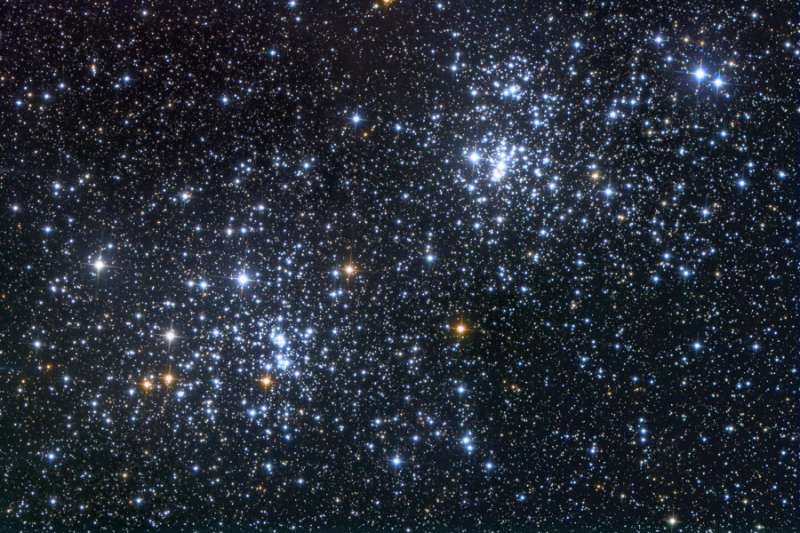
|
Credit: Roth Ritter
(Dark Atmospheres)
Explanation:
Some 7,000 light-years away, this pair of open or galactic
star clusters is an easy
binocular target,
a lovely starfield in the
northern constellation
Perseus.
Also visible to
the unaided eye from dark sky areas,
it was cataloged in 130 BC by Greek astronomer
Hipparchus.
Now known as
h and
chi Persei, or
NGC 869(above right) and NGC 884, the clusters
themselves are separated by only a few hundred light-years and
contain stars much younger and hotter than the Sun.
In addition to being physically close together, the clusters' ages
based on
their individual stars are similar - evidence that
both clusters were likely a product of the same
star-forming region.
|
January February March April May June July August September October November December |
| ||||||||||||||||||||||||||||||||||||||||||||||||
NASA Web Site Statements, Warnings, and Disclaimers
NASA Official: Jay Norris. Specific rights apply.
A service of: LHEA at NASA / GSFC
& Michigan Tech. U.
Based on Astronomy Picture
Of the Day
Publications with keywords: star cluster - galactic cluster
Publications with words: star cluster - galactic cluster
See also:
